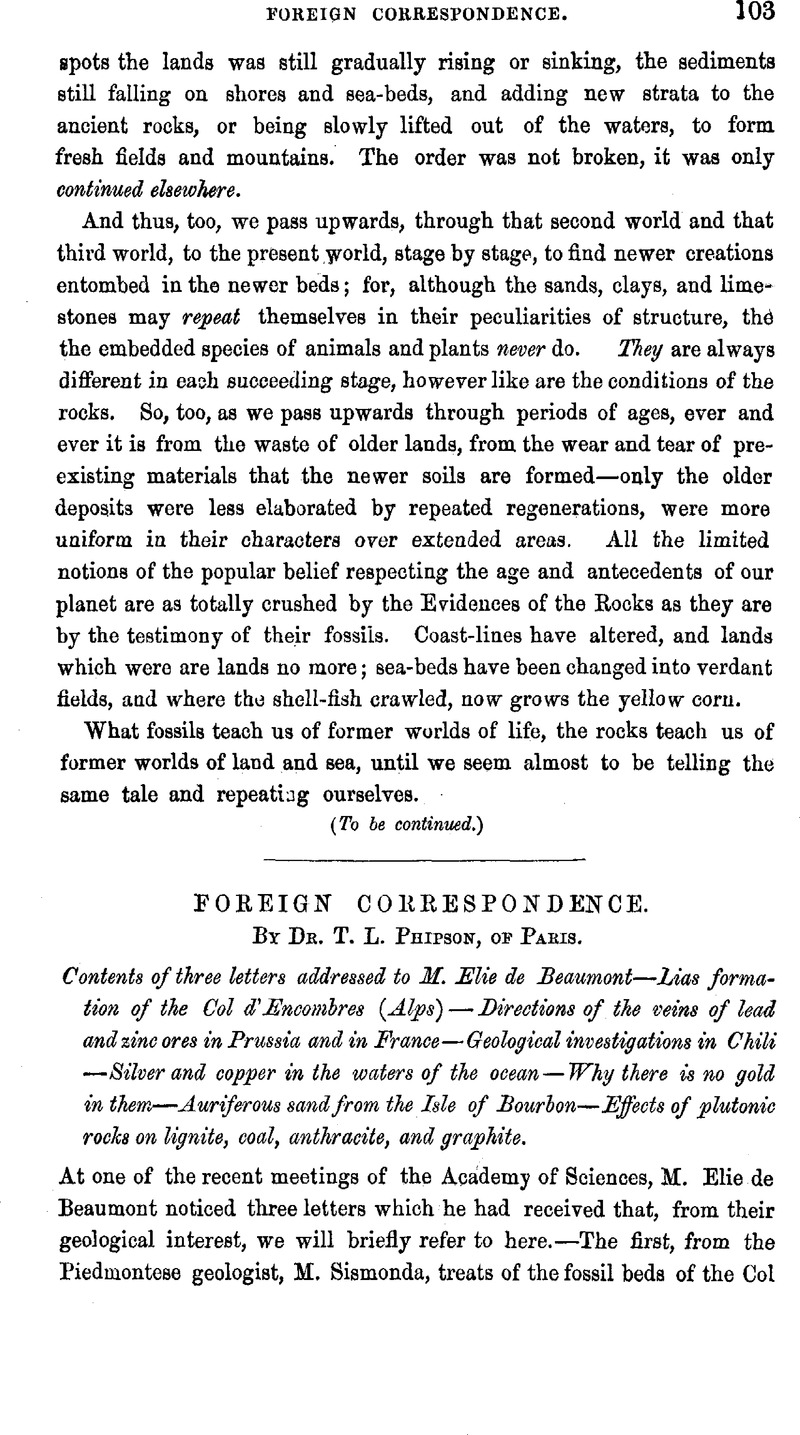No CrossRef data available.
Article contents
Foreign Correspondence
Published online by Cambridge University Press: 17 March 2016
Abstract

- Type
- Letter
- Information
- Copyright
- Copyright © Cambridge University Press 1858
References
page 104 note * It is impossible to regard this vexed question as definitely settled, even after these late researches of M.M. Sismonda and Bellardi; for we must not forget that M. Favre, and other equally talented and experienced Geologists, still consider that distinct Liassic beds are intermixed, by inversions, in some cases, with true Carboniferous beds, in these Alpine Anthraxiferous stiata; although some refer the whole to the Jurassic series, and others place them all in the Carboniferous.
page 105 note * Clay-slate.—Ed.
page 106 note * Which almost always contains slight quantities of silver.
page 108 note * Another species of titanate of iron, whioh is not magnetic.
page 108 note † Both are volcanic islands: their soil is strewn with lava, basalt, &c. Bourbon has one volcano still active; those of Mauritius have long since ceased their eruptions.
page 108 note ‡ In a series of memoirs, of which extracts have been given in the “Comptes Rendus,” from September to December, 1857.
page 108 note § Transformed or metamorphic rocks are those in which the internal texture, the mode of stratification, and sometimes the chemical composition, have been changed either by contact with, proximity to, a plutonic or volcanic rock of eruption. (For details on this interesting subject see Humboldt's “Cosmos,” vol. I, p. 248, et seq.)




